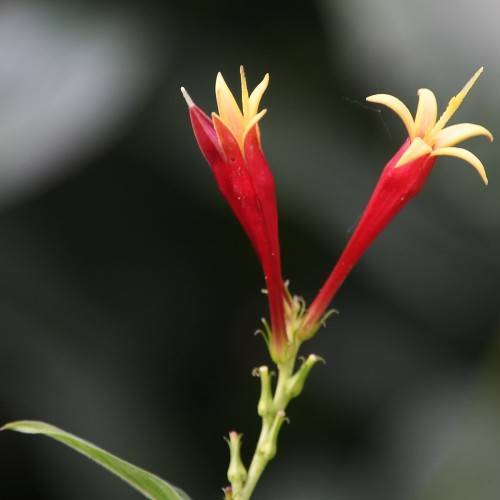
Indian pink
Spigelia marilandica 'Little Redhead'
Cycle:
Herbaceous Perennial
Watering:
Average
Hardiness Zone:
5 - 9
Flowers:
Flowers In Summer
Sun:
Full sun,part shade
Leaf:
Yes
Growth Rate:
Low
Maintenance:
Low
Salt Tolerant:
Yes
Thorny:
Yes
Care Level:
Medium
watering
Indian pink is an annual or short-lived perennial that prefers humid climates and regular moisture. It should be watered every 2-3 days during hot months and every 5-7 days during cool months. To prevent root rot, ensure that soil is well-draining and never allow roots to sit in water. Water enough to keep the soil moist at a depth of 2-3 inches.
sunlight
Indian pink (Spigelia marilandica 'Little Redhead') typically grows best in part shade, with 3-4 hours of direct sunlight per day. The plant prefers bright shade rather than darker, because direct sunlight can cause its foliage to burn. It should not be placed in an area where it will receive harsh, direct sunlight during the hottest parts of the day. For optimal growth, it is best to place in a spot in the garden where it will receive shade in the morning followed by filtered dappled sunlight for the remainder of the day.
pruning
Indian pink can be pruned in late winter or early spring for best results. Pruning should include removal of any dead or diseased branches, as well as maintaining desired shape and size. You can also remove crossing branches, shoots that are growing inwards, and suckers growing from the base. Early spring pruning should remove no more than 1-third to 1-half of the plant's top. Late winter pruning should remove no more than a maximum of 1-third of the total branches. Be careful with pruning, to ensure you do not unintentionally remove any flower buds.
